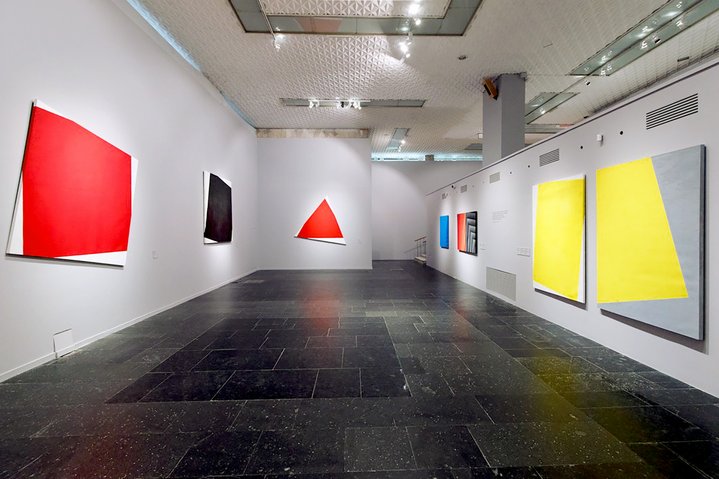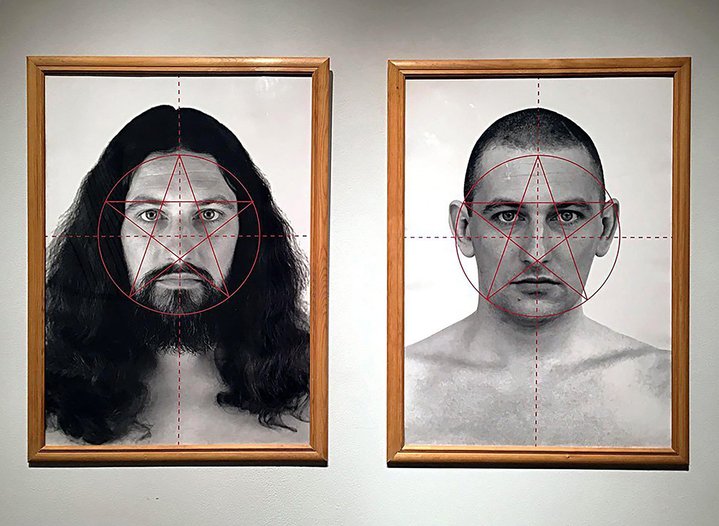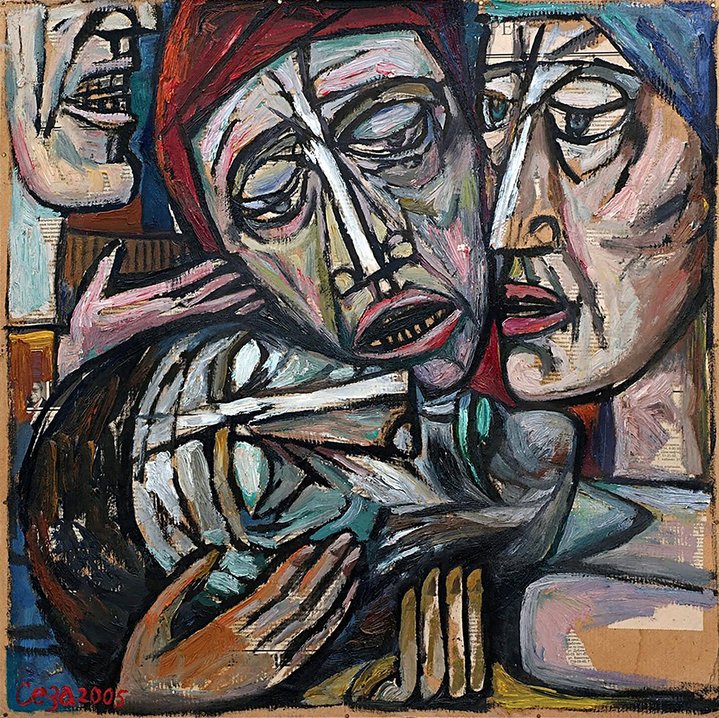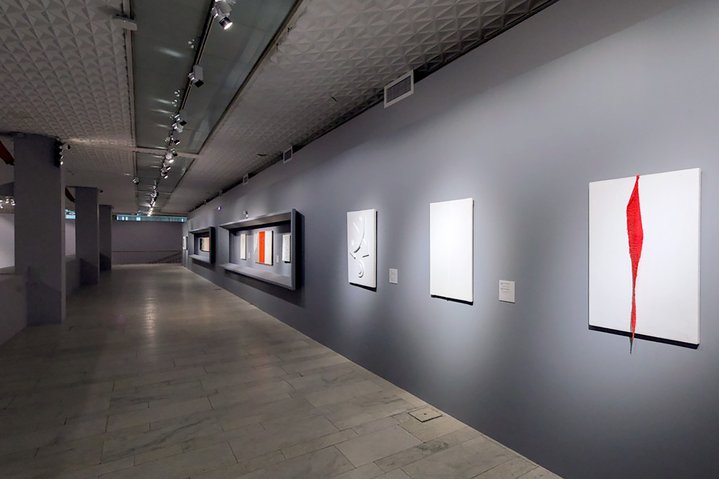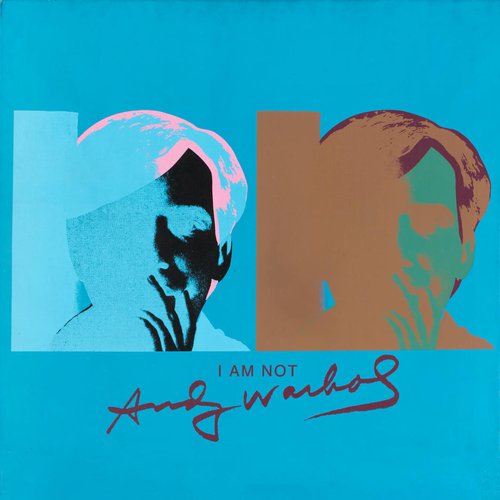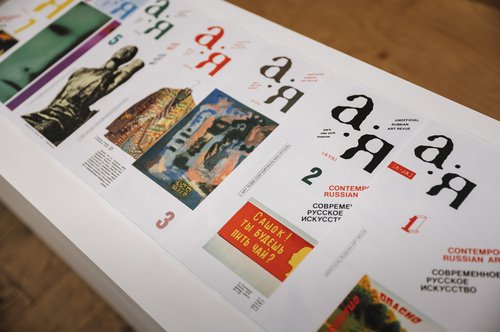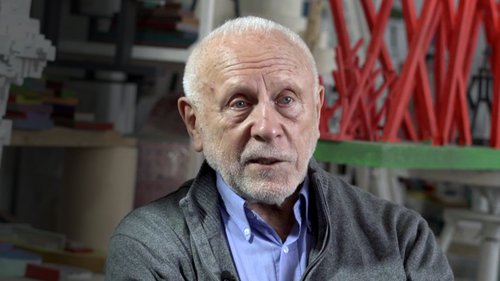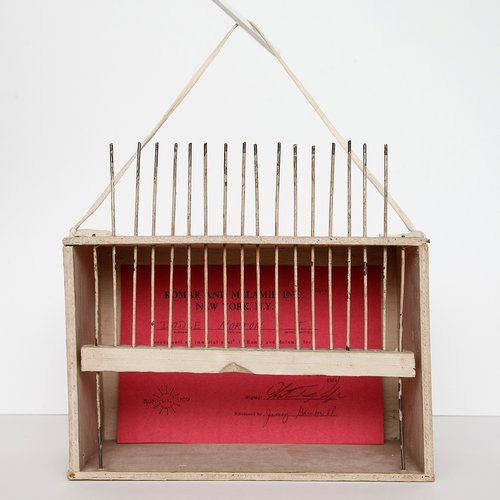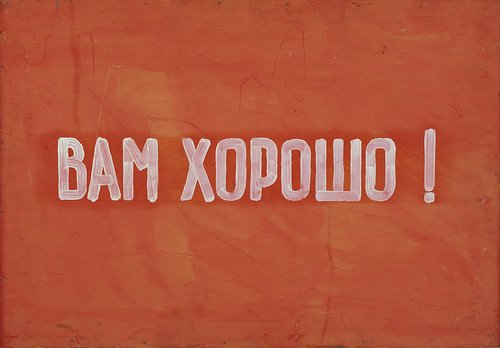Alexander Yulikov’s Alternative Vision

Alexander Yulikov. Space Alternatives. Exposition view. New Tretyakov Gallery. 2023. Moscow. Courtesy of the State Tretyakov Gallery. Photo by Ivan Novikov-Dvinskiy
An exhibition of Alexander Yulikov has opened at the State Tretyakov Gallery in Moscow. This overdue survey of a decades’ long career, gets to the heart of this most consistent and radical of Russian Minimalists.
It is a show that captures the quintessence of the artist’s creativity, not just a detailed retrospective of a life’s work. In it, you can find everything for which octogenarian artist Alexander Yulikov (b.1943) is best known either at home in Russia, or abroad. He is remarkably the only Russian artist ever to receive the prestigious Barnett and Annalee Newman Foundation Prize, which he was awarded in 2020, selected from a short list by American abstract artist Frank Stella (b. 1936). It was "his spirit of individualism and independence" which stood out.
He never did quite fit the mould. Like many artists from his generation, especially the heros of Moscow conceptualism like Ilya Kabakov (1933–2023) and Dmitry Prigov (1940–2007) Yulikov studied at the Moscow School of Art and then the Surikov Institute. But unlike most in this circle, Yulikov did not then settle abroad in the 1970s. Instead he travelled extensively throughout America and Europe where he lived off and on, and now considers himself a patriot, prefering to remember Soviet era achievements with a dose of nostalgia.
In the 1970s, he saw works by Western minimalists in magazines like Artforum, ARTnews or Art in America, but he had already made his first abstract work in 1957 which still hangs in his studio. "When I was a child, I was fascinated by the Avant-Garde. Once at school the teacher asked me to read an excerpt from Pushkin's classic novel ‘Eugene Onegin’. Instead, I went out in front of the class and recited Mayakovsky's poem 'A Cloud in Trousers' in its entirety, it took me forty minutes”. It was an act of rebellion, but “after class the teacher even confessed to me that he had known Mayakovsky personally”.
In Leonid Sokov's (1940–2018) studio in May 1976 Yulikov performed ‘The Cutting’, a happening in which he cut off his long hair which had grown beneath his shoulders. Two photographs, one before and one after are all that remain from this happening, which turned out to be the first example of body art in Russian contemporary art.
In the 1980s, Ilya Kabakov once went to see an exhibition of Yulikov’s work at Malaya Gruzinskaya Street in Moscow. Yulikov recalls: "He stood in the doorway, looked carefully at all my work and said: 'Well, this is meditative art,' and waved his hand." It may have been an ironic quip not intended to be a compliment, but Yulikov liked it. There is a sense that his art is perfect for meditative practices, whether religious, philosophical or psychotherapeutic.
Yulikov likes to remember a story from his childhood when he first discovered the work of Pavel Filonov (1883–1941). He had been given permission by the headmaster at his school to see a collection of old Russian paintings in the apse of a former church in Tolmachi. And there, by chance, he saw a place where works by formalist painters were being stored, all artists who had been outlawed by the Soviet authorities, the Russian avant-garde. "I saw them all – Malevich, Kandinsky, Goncharova, Larionov, Chagall and other artists of the Russian Avant-Garde. I was particularly lucky to see Filonov. There was a young lady working there who showed me forty of his works, in secret. And the very next day, they happened to tell us about Filonov at school. There was only one kid in the class who had even heard his name, Ivan Nikolaev, grandson of Zinaida Serebriakova. And I had seen his work just the day before!". Such first hand encounters with the Russian avant-gardists were rare at the time.
Yulikov’s minimalism consists of an idiosyncratic mix of both the rational and the expressive which the artist experiences as a conflict in his work. There is competition between geometrical forms and free expression, dynamism, spontaneity, and then destruction, loss of balance and fragmentation of the composition. This is unlike American minimalism of the 1960s, whose protagonists did not walk a narrow line between both new forms and old traditions.
It is almost impossible to mount any exhibition without the artist’s direct involvement, as his signature technique is in making disjointed compositions which often consist of several canvases which need to be carefully assembled together at specific angles. There are his most famous works: 'Red Star and Black Square', which is broken up into four parts; or the 'Broken Black Square' he created in 2015 exactly one hundred years after Malevich's iconic square. Other works have a strong optical vibe are his 2015 compositions 'Red and White' and 'Red, White and Black' or the earlier 'Silver Composition with Hole' (1990).
Despite its ambitious scope, there are absences from the show. There are no etchings, silkscreen prints, or drawings and curiously none of the expressionist figurative works he has been making since the 1960s. These typically encompass four themes: nudes, heads, urban motifs inspired by New York and biblical subjects.
Yulikov is a painter through and through, despite his interest in minimalism, he has never abandonned paint and brush, as he confesses: "all that I do is paint." He puts it down in part to his art education as a child when his eye and hand were both disciplined to fully understand space and colour. "We were taught all the elements of European classical art. I was taught to paint like Raphael and Michelangelo. I tried very hard to paint like them and I failed. But I know how brilliant they were, and young artists today have no idea about this."
American collector Norton Dodge (1927–2011) was a great admirer of Yulikov’s work. Dodge started to buy his work through dealers, finally meeting the artist in person in 1989. There are just over fifty paintings by Alexander Yulikov in the collection of the Zimmerli Museum at Rutgers University, a close second to the holdings of the Tretyakov Gallery. Dodge assembled the most fundamental collection of Russian unofficial art of the second half of the twentieth century outside Russia, his contribution is unparalleled according to Yulikov: "His energy, passion, love of Russian art made a strong impression on me. Maybe this American collector has done more for our art than anyone else in the world?”
He is a tireless, restless spirit. What lies ahead? "Right now I have more than one hundred pieces in mind. If I can do it, I'll do it".






